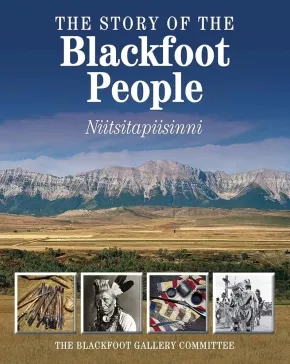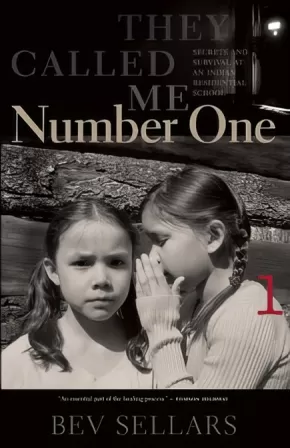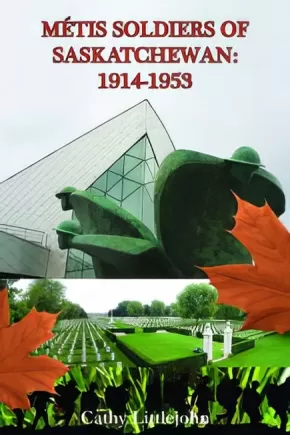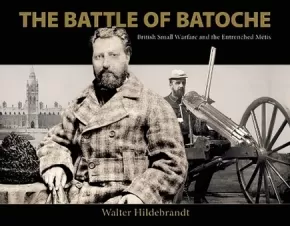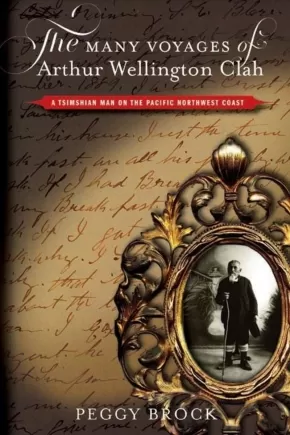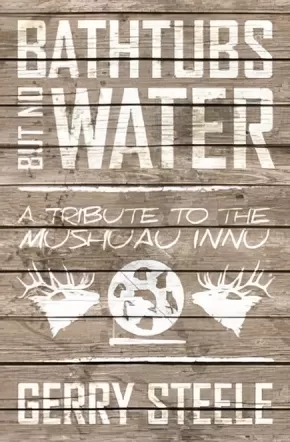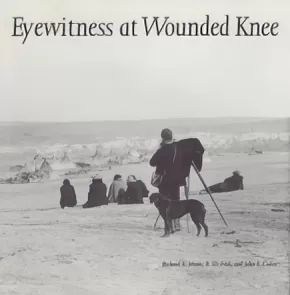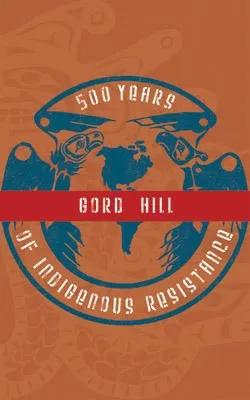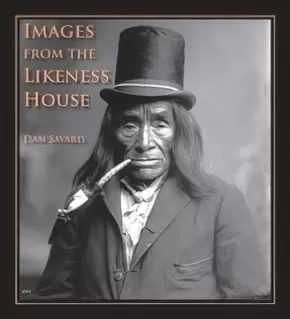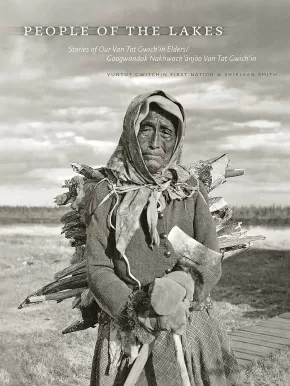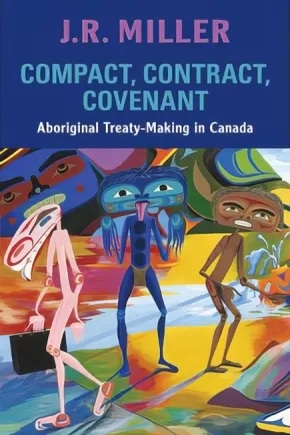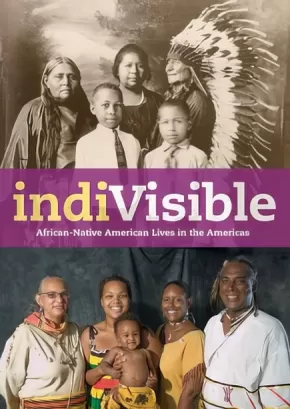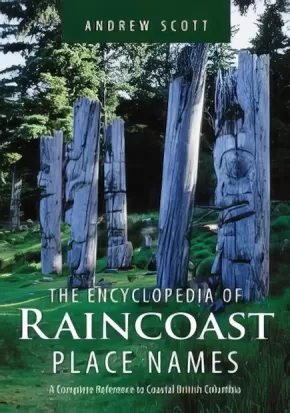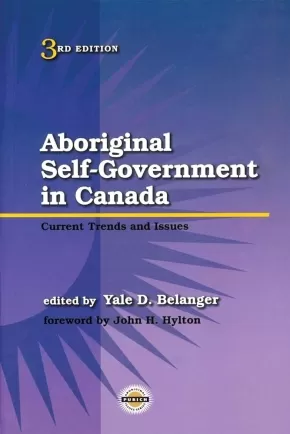History
Synopsis:
For the first time in history, the Blackfoot people share their culture, beliefs and traditions with the rest of the world.
In an innovative partnership with the Glenbow Museum in Calgary, Alberta, a team of elders and spiritual leaders from the Blackfoot community agreed to share their history, traditions and artifacts in an effort to document their lives. The Story of the Blackfoot People: Nitsitapiisinni is the first piece of permanent documentation written by the leaders of the Blackfoot community about their lives both past and present.
This book chronicles all the important aspects of Blackfoot life and history. The book begins by exploring the fundamental belief systems of the Blackfoot including their traditional stories, sacred places, dances and ceremonies. Strong relationships are recognized by the Blackfoot as one of the most important keys to survival and the roles of men, women, children and elders, and their sacred connection to nature and their environment, are examined in detail. Less harmonious relationships are also candidly explored including relations between the Blackfoot people and the governments of the United States and Canada. In its moving conclusion, the Blackfoot community discusses the importance of uniting ancient traditions with modern challenges in order for their legacy to survive.
Revealing the enduring strength and fortitude of spirit of the Blackfoot people, this book will have meaning for both native and non-native readers alike.
Authenticity Note: This work is labelled as containing Authentic Indigenous Text because of the contributions from elders and other Indigenous peoples.
Synopsis:
Like thousands of Aboriginal children in Canada, and elsewhere in the colonized world, Xatsu'll chief Bev Sellars spent part of her childhood as a student in a church-run residential school.
These institutions endeavored to "civilize" Native children through Christian teachings; forced separation from family, language, and culture; and strict discipline. Perhaps the most symbolically potent strategy used to alienate residential school children was addressing them by assigned numbers only-not by the names with which they knew and understood themselves.
In this frank and poignant memoir of her years at St. Joseph's Mission, Sellars breaks her silence about the residential school's lasting effects on her and her family-from substance abuse to suicide attempts-and eloquently articulates her own path to healing. 'Number One' comes at a time of recognition-by governments and society at large-that only through knowing the truth about these past injustices can we begin to redress them.
Awards
- 2014 Burt Award Third Place Winner
Educator Information
Grades 10-12 BC English First Peoples resource for the unit Place-Conscious Learning - Exploring Text through Local Landscape.
Additional Information
256 pages | 5.67" x 8.20"
Synopsis:
Métis Soldiers of Saskatchewan greatly contributes to our knowledge of the role played by Saskatchewan’s Métis during Canada’s war efforts. This important commemorative book contains hundreds of photographs as well as a detailed list of more than 1,700 Métis soldiers from Saskatchewan who fought in two World Wars and the Korean war.
Synopsis:
The Battle of Batoche is the best-known confrontation between Métis and British soldiers in the Northwest Resistance of 1885. It remains one of Canada's most emotion-laden memories, eloquently revisited in this revised and expanded edition.The strategies of both sides are thoroughly examined, and numerous maps and photographs offer detailed description of the fateful battle. Introduction by Jean Teillet, great-grandniece of Louis Riel.
Synopsis:
First-hand accounts of Indigenous people’s encounters with colonialism are rare. A daily diary that extends over fifty years is unparalleled. Based on a transcription of Arthur Wellington Clah’s diaries, this book offers a riveting account of a Tsimshian man who moved in both colonial and Aboriginal worlds. From his birth in 1831 to his death in 1916, Clah witnessed profound change: the arrival of traders, missionaries, and miners, and the establishment of industrial fisheries, wage labour, and reserves. His many voyages – physical, cultural, and spiritual – provide an unprecedented Aboriginal perspective on colonial relationships on the Pacific Northwest Coast.
Drawing on a painstaking transcription of Arthur Wellington Clah’s diaries, Peggy Brock pieces together the many voyages -- physical, cultural, intellectual, and spiritual -- of a Tsimshian man who moved in both colonial and Aboriginal worlds. Clah’s birth in 1831 coincided with the establishment of a permanent fur trade post, and he became student, teacher, and confidant to missionary William Duncan. Later, Clah’s spiritual voyage into the world of colonial culture transformed him into a devout Christian and an evangelist for the faith.
From the goldfields of BC and Alaska to the hop fields of Washington State, Clah witnessed profound change. His diaries reveal the complexities of personal interactions between colonizers and the colonized and the inevitable tensions within a community undergoing rapid change. They also show how Clah’s hopes for his people were gradually eroded by the realities of land dispossession, interference by the colonial state in cultural and political matters, and diminishing economic opportunities.
Taken together, Clah’s many voyages offer an unprecedented Aboriginal perspective on colonial relationships as they played out on the Pacific Northwest Coast.
This book is required reading for students and scholars of indigenous peoples and colonialism and anyone interested in BC or Canadian history.
Reviews
"The Many Voyages of Arthur Wellington Clah is a striking book offering an on-the-ground viewpoint of colonialism as it evolved on the Pacific Northwest Coast of Canada." - Susan Neylan, Wilfrid Laurier University, Journal of Colonialism and Colonial History, V. 13, No 2, Fall 2012
"A fascinating account...Peggy Brock has made a truly significant contribution to our understanding of the history of the northwest coast in the nineteenth century." - Robin Fisher, Mount Royal University, International Journal of Maritime History, Vol XXIV No 3
"Arthur Wellington Clah’s diary is likely the most remarkable document to come into the light of Pacific Northwest Coast history ... Surmounting the challenges presented by this rich and at times near impenetrable personal record, Peggy Brock has researched and admirably summarized fifty years of the diary, pulling out key themes and highlighting its many contradictions. This much-needed introduction to a man and an indigenous history of British Columbia and Alaska will change the way we think about our past." - John S. Lutz, author of Makúk: A New History of Aboriginal-White Relations
Clah’s life and diary offer a window into the lives of the Tsimshian political hierarchy of the time and Tsimshian society’s interaction with colonialism ... His voyage is a metaphor for the voyage that his own and other indigenous people were also taking in their encounters with colonialism." - Neil Sterritt, consultant in Aboriginal leadership and governance
Additional Information
324 pages | 6.00" x 9.00" | 19 photographs, 4 maps | Paperback
Synopsis:
In 1967, the Mushuau Innu — the Aboriginal people of Labrador — were resettled on Davis Inlet by the Canadian government. Originally a land-based people, this move to the coast created cultural, economic and spiritual upheaval, and Davis Inlet became synonymous with shocking substance abuse and suicide rates. In Bathtubs but No Water, Gerry Steele offers the reader a participant observer’s perspective on Davis Inlet. An employee of the federal government working with the Mushuau Innu since 1993, Steele explores their oral history of the resettlement process, substance abuse and deaths, and argues that these problems are a direct result of the government’s lack of respect for Aboriginal peoples. In 1992, the Innu tried to regain responsibility for their future, focusing on the traditions and strengths of their own community, but government bureaucracy would not support this partnership. Steele urges the government to engage in respectful partnerships with Aboriginal communities in order to achieve positive change.
Additional Information
|
Synopsis:
On a wintry day in December 1890, near a creek named Wounded Knee on the Pine Ridge Reservation in South Dakota, the Seventh Cavalry of the U.S. Army opened fire on an encampment of Sioux Indians. This assault claimed more than 250 lives, including those of many Indian women and children. The tragedy at Wounded Knee has often been written about, but the existing photographs have received little attention until now.
Eyewitness at Wounded Knee brings together and assesses for the first time some 150 photographs that were made before and immediately after the massacre. Present at the scene were two itinerant photographers, George Trager and Clarence Grant Morelodge, whose work has never before been published. Accompanying commentaries focus on both the Indian and the military sides of the story. Richard E. Jensen analyzes the political and economic quagmire in which the Sioux found themselves after 1877. R. Eli Paul considers the army’s role at Wounded Knee. John E. Carter discusses the photographers and also the reporters and relic hunters who were looking to profit from the misfortune of others.
For this Bison Books edition each image has been digitally enhanced and restored, making the photographs as compelling as the event itself. Heather Cox Richardson tells the story behind the endeavor to present a meaningful account of this significant historical event.
Synopsis:
The history of the colonization of the Americas by Europeans is often portrayed as a mutually beneficial process, in which ”civilization” was brought to the Natives, who in return shared their land and cultures. A more critical history might present it as a genocide in which Indigenous peoples were helpless victims, overwhelmed by European military power. In reality, neither of these views is correct. This book is more than a history of European colonization of the Americas. In this slim volume, Gord Hill chronicles the resistance by Indigenous peoples, which limited and shaped the forms and extent of colonialism. This history encompasses North and South America, the development of nation-states and the resurgence of Indigenous resistance in the post-WW2 era.
Additional Information
72 pages | 8.50" x 5.50"
Synopsis:
On a winter’s day in 1889, Tsimshian Chief Arthur Wellington Clah went to Hannah and Richard Maynard’s photography studio in Victoria “to give myself likeness.” In Images from the Likeness House, Dan Savard explores the relationship between First Peoples in British Columbia, Alaska and Washington and the photographers who made images of them from the late 1850s to the 1920s. He gives examples of the great technological advancements that took place, from wet-glass-plate to nitrate-film negatives, showing the images in their original state, not cropped, corrected or retouched.
This is not only an important book about photography, but also a visual statement about perception (and misperception), cultural change and survival. Images from the Likeness House will appeal to ethnographers, photographers, art lovers and anyone interested in the history of BC, Alaska and Washington.
Additional Information
224 pages | 9.30" x 10.30"
Synopsis:
Many people have a mental picture of the Canadian north that juxtaposes beauty with harshness. For the Van Tat Gwich'in, the northern Yukon is home, with a living history passed on from elders to youth. This book consists of oral accounts that the Elders have been recording for 50 years, representing more than 150 years of their history, all meticulously translated from Gwich'in. Yet this is more than a gathering of history; collaborator Shirleen Smith provides context for the stories, whether they are focused on an individual or international politics. Anthropologists, folklorists, ethnohistorians, political scientists, economists, members of First Nations, and readers interested in Canada's northernmost regions will find much to fascinate them.
Additional Information
|
Synopsis:
Following the removal of the gray whale from the Endangered Species list in 1994, the Makah tribe of northwest Washington State and the Nuu-chah-nulth Nation of British Columbia announced that they would revive their whale hunts. The Makah whale hunt of 1999 was met with enthusiastic support and vehement opposition. A member of the Nuu-chah-nulth First Nation, Charlotte Coté offers a valuable perspective on the issues surrounding Indigenous whaling. Her analysis includes major Aboriginal studies and contemporary Aboriginal rights issues, addressing environmentalism, animal rights activism, anti-treaty conservatism, and the public’s expectations about what it means to be “Indian.”
Synopsis:
One of Canada's longest unresolved issues is the historical and present-day failure of the country's governments to recognize treaties made between Aboriginal peoples and the Crown. Compact, Contract, Covenant is renowned historian of Native-newcomer relations J.R. Miller's exploration and explanation of more than four centuries of treaty-making. The first historical account of treaty-making in Canada, Miller untangles the complicated threads of treaties, pacts, and arrangements with the Hudson's Bay Company and the Crown, as well as modern treaties to provide a remarkably clear and comprehensive overview of this little-understood and vitally important relationship.
Covering everything from pre-contact Aboriginal treaties to contemporary agreements in Nunavut and recent treaties negotiated under the British Columbia Treaty Process, Miller emphasizes both Native and non-Native motivations in negotiating, the impact of treaties on the peoples involved, and the lessons that are relevant to Native-newcomer relations today. Accessible and informative, Compact, Contract, Covenant is a much-needed history of the evolution of treaty-making and will be required reading for decades to come.
Additional Information
448 pages | 5.80" x 9.00"
Synopsis:
Throughout American history, people of combined African and Native American descent have often struggled for acceptance, not only from dominant cultures but also from their own communities. In this collection of twenty-seven groundbreaking essays, authors from across the Americas explore the complex personal histories and contemporary lives of people wth a dual heritage that has rarely received attention as part of the multicultural landscape.
Illustrated with seventy-five paintings, photographs, and drawings, the book brings to light an epic but little-known part of American history that speaks to present-day struggles for racial identity and understanding.
Additional Information
256 pages | 7.00" x 9.75"
Synopsis:
In 1909 Captain John T. Walbran published one of the most beloved and enduring of all BC books, British Columbia Coast Names. Harbour Publishing celebrates the hundredth anniversary of that landmark work by presenting the first book to update Walbran's classic, Andrew Scott's Raincoast Place Names. Like its progenitor, Raincoast Place Names is much more than simply a catalogue of name origins because it tells the often fascinating stories behind the names and in so doing serves as a history of the region in capsule form. It is also a monumental work, twice the size of Walbran's and including more than three times as many places. Four thousand entries consider, in intriguing detail, the stories behind over five thousand place names: how they were discovered, who named them and why, and what the names reveal. It describes the original First Nations cultures, the heroics of the 18th-century explorers and fur traders, the gruelling survey and settlement efforts of the 19th century, the lives of colonial officials, missionaries, gold seekers and homesteaders, and the histories of nearly every important vessel to sail or cruise the coast.
The book also examines—for the first time—the rich heritage of BC place names added in the 20th century. These new entries reflect the world of the steamship era, the ships and skippers of the Union and Princess lines, the heroes of the two World Wars and the sealing fleet, Esquimalt's naval base and BC's fishing, canning, mining and logging industries.
Richly illustrated with photos and maps, this book is an essential reference work, a must-have guide for boaters and mariners and a standard companion for anyone interested in BC history. It also makes a fine shelf-mate for the Encyclopedia of British Columbia.
Synopsis:
Building on the success of the first two editions, this volume briefly recaps the historical development and public acceptance of the concept of Aboriginal self-government, then proceeds to examine its theoretical underpinnings, the state of Aboriginal self-government in Canada today, and the many practical issues surrounding implementation. Topics addressed include: justice innovations, initiatives in health and education to grant greater Aboriginal control, financing and intergovernmental relations, Aboriginal-municipal government relations, developing effective Aboriginal leadership, Métis self government aspirations, the intersection of women’s rights and self-government, and international perspectives. Various self-government arrangements already in existence are examined including the establishment of Nunavut, the James Bay Agreement, Treaty Land Entitlement settlements, the Alberta Métis settlements, and many other land claims settlements that have granted Aboriginal communities greater control over their affairs.
This book is an interdisciplinary guide for practitioners, policy makers, and students interested in learning about government policy and the aspirations of Canada’s Aboriginal peoples. With the exception of three updated chapters, all of the material by the 31 contributors in this volume is new and original. Brief biographies of the contributors can be found on our web site.
Contributors Include:
Yale Belanger is an assistant professor of Native American Studies at the University of Lethbridge where he divides his time as the department’s history and politics specialist while also teaching in the First Nations Governance Program in the Management Department. He is the author of Gambling with the Future: The Evolution of Aboriginal Gaming in Canada (Purich Publishing, 2006).
Frances Abele teaches in the School of Public Policy and Administration at Carleton University. She publishes in the areas of northern and Indigenous affairs, and has worked with Indigenous governments and organizations for the last three decades.
Yvon Allard is an independent Aboriginal health consultant in Ottawa. As a member of the Manitoba Métis community, he has served as an advisor on health issues to regional and national Métis organizations.
Colette Arcand is a fourth-year student majoring in Native Studies with a minor in Economics. Colette is a member of the Alexander First Nation in Alberta and a volunteer board member of the Friends of the Kipohtakaw Historical Foundation.
Catherine Bell is a professor of law at the University of Alberta specializing in Aboriginal legal issues, property law, community based legal research, and dispute resolution. She has published extensively on Métis and First Nation legal issues including two books on the Métis settlements: Alberta’s Métis Settlement Legislation: An Overview of Ownership and Management of Settlement Lands and Contemporary Métis Justice: The Settlement Way.
Brian Calliou is the program director for The Banff Centre’s Aboriginal Leadership and Management. Brian is a member of the Sucker Creek First Nation in north central Alberta and holds memberships with the Canadian Bar Association, the Indigenous Bar Association, and the Legal Archives Society of Alberta.
Angela Cameron is a Ph.D. candidate at the Faculty of Law, University of Victoria. Her areas of research and writing include: restorative justice, criminal law, intimate violence, reproductive technologies, property law, and feminist legal theory.
Larry Chartrand is an Associate Professor of Law at the University of Ottawa. His area of scholarship is in the field of Aboriginal rights and in particular, Métis rights. He obtained his B.Ed. from the University of Alberta in 1986, his LL.B from York University in 1989, and his LL.M. from Queen’s University in 2001. He was Director of the Aboriginal Governance Program and Professor of Politics at the University of Winnipeg from 2004 - 2007.
Ken Coates is Professor of History and Dean, Faculty of Arts, University of Waterloo. He specializes in the history of the Canadian North, Indigenous-newcomers relations and contemporary Aboriginal political issues. His most recent work is A Global History of Indigenous Peoples: Struggle and Survival.
Jo-Anne Fiske is Dean of Graduate Studies and professor of Women’s Studies at the University of Lethbridge. She has worked with Aboriginal and First Nations communities on social policy, health policy, human rights, and homelessness.
Augie Fleras is associate professor of sociology at the University of Waterloo. He is the author of numerous books, including Social Problems in Canada (Third Edition) and Unequal Relations (Third Edition; with Jean Elliott) and Recalling Aotearoa(with Paul Spoonley).
Jim Frideres is currently a professor of Sociology and the Director of the International Indigenous Studies program at the University of Calgary. He also holds the Chair of Ethnic Studies. He is the author of numerous articles and co-author with Rene Gadacz of Aboriginal Peoples in Canada, now in its 8th edition.
Joe Garcea is a professor in the Department of Political Studies at the University of Saskatchewan, where he teaches local government, public administration, and public policy analysis. His areas of expertise include municipal and intergovernmental relations. He co-authored with F. Laurie Barron Urban Indian Reserves: Forging New Relationships in Saskatchewan (Purich Publishing, 1999).
Ailsa Henderson is assistant professor in the Political Science at the University of Toronto. The author of Nunavut: Rethinking Political Culture (UBC Press, 2007), she has published two books and more than twenty-five journal articles or book chapters on sub-state political culture in federal and multi-national states, and is the principal investigator of the Nunavut Social Attitudes Survey.
James (Sa'ke'j) Youngblood Henderson is the research director of the Native Law Centre of Canada and teaches Aboriginal law at the College of Law, University of Saskatchewan. He was awarded the Indigenous Peoples’ Counsel (2005) and the National Aboriginal Achievement Award for Law and Justice (2006).
John Hylton has served as a chief executive, university educator, senior public servant, and consultant. He has served many commissions and inquiries in all parts of Canada, including the Royal Commission on Aboriginal Peoples and the Ipperwash Inquiry. He is currently active working with organizations to improve strategy, leadership, governance and performance. John was the editor of the first two editions of Aboriginal Self-Government in Canada (Purich Publishing, 1994, 1999).
Robert Alexander Innes is a Member of Cowessess First Nation and an Assistant Professor in the Department of Native Studies at the University of Saskatchewan.
Josee Lavoie is an assistant professor in the Health Sciences Program at the University of Northern British Columbia who previously spent 10 years working for Indigenous controlled primary health care services in Nunavut and northern Saskatchewan.
Roger Maaka, Ngati Kahungunu, is head of the Department of Native Studies at the University of Saskatchewan. He sits on the Waitangi Tribunal enquiry into the Indigenous Flora and Fauna and Intellectual Property claim. His research interests include urbanization and Indigenous peoples, Native Studies as an academic discipline, post-treaty settlement development, the construction of contemporary indigenous identities, and indigeneity as a global social movement.
W.R. Morrison is Professor of History, University of Northern British Columbia. He works on aspects of northern Canada history and is currently working with Ken Coates on a survey history of major Canadian court cases.
Bradford W. Morse is Professor of Law, University of Ottawa. He was Research Director to the Aboriginal Justice Inquiry of Manitoba 1988-91; Chief of Staff to Minister of INAC 1993-96; legal advisor, consultant, and negotiator for many First Nations, national and regional Indigenous organizations, royal commissions, and governments in Canada, Australia, and New Zealand over the past 30 years.
Val Napoleon is a member of the Saulteau First Nation in northeastern British Columbia and is of Cree and Dunnezah heritage. She worked as a community activist and consultant in northwestern B.C. for over twenty-five years. Since 2005, Val has been an assistant professor with the University of Alberta teaching in the Faculties of Law and Native Studies.
David Newhouse is Onondaga from the Six Nations of the Grand River community near Brantford, Ontario. He is the first Principal of the Peter Gzowski College at Trent University and former Chair of the Department of Native Studies. He is an Associate Professor in the Department of Native Studies and the Business Administration Program.
John O’Neil is Dean of Health Sciences at Simon Fraser University. He has published more than 120 papers and reports on a variety of Aboriginal health issues, including self-government and health system development, cultural understandings of environmental health risks, and social determinants of health disparities.
Terrence Ross Pelletier is former Chief of Cowessess First Nation and served as the Treaty Land Entitlement Coordinator for Cowessess during the band’s TLE process. He is currently pursuing a Masters in Educational Administration at the University of Saskatchewan.
Michael Prince is Lansdowne Professor of Social Policy at the University of Victoria. Among his areas of research, he has collaborated with Frances Abele on numerous publications dealing with Aboriginal [Indigenous] government and Canadian federalism.
Jeff Reading is a professor in the Faculty of Human and Social Development and a faculty associate with the Indigenous Governance Program at the University of Victoria. He is Fellow of the Canadian Academy of Health Sciences and his research has brought attention to issues such as disease prevention, tobacco use and misuse, and diabetes among Aboriginal people in Canada.
Jean-Paul Restoule is assistant professor of Aboriginal Education in the Department of Adult Education and Counselling Psychology at the Ontario Institute for Studies in Education of the University of Toronto. He is a member of the Dokis First Nation.
Harold Robinson is a member of the Métis Settlements General Council located in Edmonton, Alberta.
Dahti Scott is currently studying at the University of Alberta where she is completing an undergraduate double major in Environmental Conservation Sciences and Native Studies. Dahti is a Tlicho Dene who grew up in the Northwest Territories.
Gabrielle Slowey is an Assistant Professor in the Department of Political Science at York University (Toronto) where she teaches courses in Aboriginal Politics. Her research focuses on issues of self-government, land claims, and non-renewable resource development. Field sites include northern Alberta, Yukon, NWT, James Bay and New Zealand.
Authenticity Note: Because of the contributions from Indigenous peoples to this work, it has been labelled as containing Authentic Indigenous Text.

